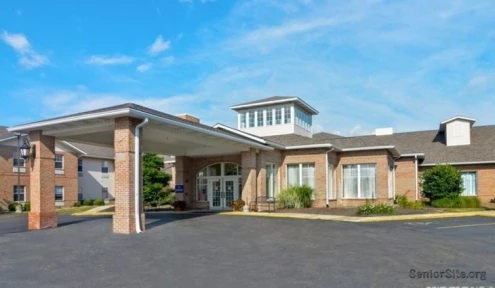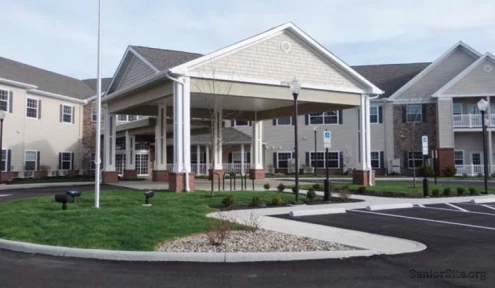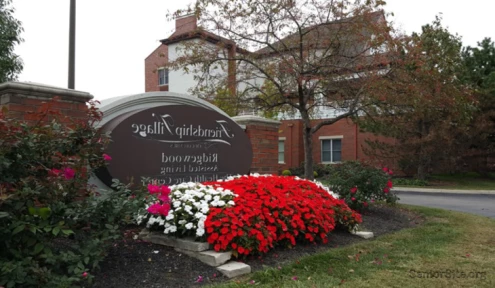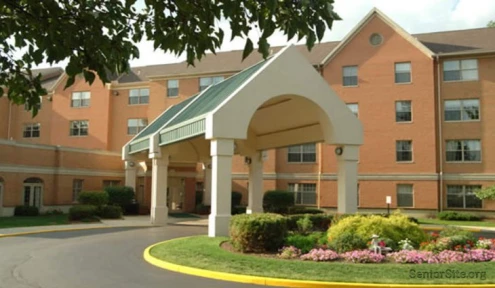Social Security benefits make up nearly 50% of post-retirement income for Americans aged 60 to 89, leading many to wonder: does Social Security pay for assisted living? While the average monthly Social Security benefit is $1,767.03, the stark reality is that assisted living costs average $4,807 per month nationwide.
I’ve found that this significant gap between Social Security payments and actual assisted living expenses creates a challenging situation for seniors and their families. In fact, Social Security benefits typically cover less than half of assisted living costs, which can exceed $54,000 annually for a private bedroom.
In this comprehensive guide, I’ll explore how to navigate assisted living costs using Social Security benefits, examine additional funding options, and share practical strategies to help bridge this financial gap. We’ll look at real solutions that combine various benefit programs and creative approaches to make assisted living more affordable.
The Reality of Social Security Benefits for Seniors in 2025
The gap between Social Security income and assisted living expenses continues to be a major challenge for seniors. Let’s examine what beneficiaries can actually expect in 2025.
Average monthly Social Security payments in 2025
After the latest cost-of-living adjustment, the average monthly Social Security retirement benefit increased to $1,976 in January 2025, up $49 from the previous year. For retired couples both receiving benefits, the average monthly payment is now $3,089. Despite these increases, these amounts fall significantly short of covering typical assisted living expenses.
Moreover, Social Security beneficiaries who have additional income sources might see differences in their benefits. For instance, if a recipient has other income like pensions or retirement accounts, their total resources may be somewhat higher, though still typically insufficient for comprehensive assisted living care.
How cost-of-living adjustments affect benefit amounts
The 2.5% cost-of-living adjustment (COLA) implemented for 2025 affects more than 72.5 million Americans receiving Social Security and Supplemental Security Income. However, this adjustment represents the lowest increase in four years, reflecting cooler inflation compared to the pandemic-era spikes that produced benefit increases of 5.9% in 2022 and 8.7% in 2023.
Although the COLA aims to preserve purchasing power against inflation, many seniors report that these adjustments barely keep pace with rising costs. As one 73-year-old analyst noted, her 2025 COLA has been largely consumed by increases in homeowner’s insurance, utilities, food costs, and Medicare premiums.
Typical assisted living costs across different regions
Currently, the national median cost of assisted living ranges from $5,190 to $5,676 per month according to different industry reports. This translates to approximately $63,000-$68,110 annually[52], far exceeding what most seniors receive from Social Security alone.
Regional variations are substantial. Depending on the state, median monthly costs range from about $4,000 to $8,000. The Northeast consistently ranks as the most expensive region, with nine of the ten most expensive states located there (Alaska being the exception). Vermont and Massachusetts have some of the highest costs, while Mississippi and Missouri offer more affordable options.
Additionally, these base costs often don’t include extra charges for specialized care, private rooms, or additional services, further widening the gap between Social Security benefits and actual expenses.
Can You Afford Assisted Living on Social Security Alone?
The harsh reality many seniors face is simple math: Social Security payments typically cover only about one-third of assisted living expenses. This financial hurdle creates difficult decisions for millions of Americans seeking care in their later years.
Breaking down the numbers: The coverage gap
The average monthly Social Security retirement benefit in 2025 is approximately $1,979, while the national median cost of assisted living stands at $5,190 per month. This creates a substantial monthly shortfall of over $3,200. Essentially, seniors relying solely on Social Security benefits would need additional resources to cover roughly 62% of assisted living costs.
Even with the maximum possible benefits, the gap remains daunting. According to financial analysts, the typical American would need to save for about 17 years just to afford a single year of assisted living.
State-by-state comparison of affordability
Affordability varies dramatically by location. While assisted living in Vermont costs nearly $8,000 monthly, Mississippi offers options closer to $4,000. Furthermore, Optional State Supplements (OSS) can provide critical additional support, though amounts vary significantly from state to state.
Notably, states like Colorado offer supplements of approximately $700 per month, whereas others like Alabama provide minimal assistance. Consequently, some states like Ohio and Indiana have imposed caps on what assisted living facilities can charge residents receiving federal benefits.
Real stories: Seniors making it work
Ultimately, most seniors combine multiple funding sources to make assisted living financially viable. Many leverage retirement savings, sell their homes, or utilize reverse mortgages to generate additional income.
Veterans often access specialized benefits that significantly reduce costs. Likewise, some families establish shared contribution approaches, where relatives collectively help bridge the funding gap.
Some seniors specifically choose facilities offering flexible payment plans or discounts for veterans and long-term residents. Others relocate to states with lower living costs and more generous supplement programs, stretching their Social Security dollars further.
Supplemental Programs That Work With Social Security
Beyond standard Social Security retirement benefits, several supplemental programs can help seniors afford assisted living costs. Understanding these options is crucial for creating a viable financial plan.
SSI and SSDI: Additional federal support options
Supplemental Security Income (SSI) provides financial assistance for low-income adults with disabilities or those aged 65+. The average monthly SSI benefit for older adults is approximately $1,033. Meanwhile, Social Security Disability Insurance (SSDI) supports those unable to work due to medical conditions expected to last at least one year.
Importantly, some seniors qualify for both Social Security retirement benefits and SSI simultaneously – a situation called “concurrent benefits”. This occurs when an individual is eligible for Social Security but receives a low benefit amount, allowing SSI to supplement their income up to a specific threshold.
Unlike retirement benefits, SSDI eligibility depends on work history and disability severity rather than age. Once approved, these payments can be allocated toward assisted living expenses, similar to Social Security retirement benefits.
State-specific programs and waivers
Optional State Supplements (OSS) represent state-funded financial assistance added to federal SSI benefits specifically for assisted living costs. Benefit amounts vary significantly by location, with Colorado offering around $700 monthly while states like Florida provide only about $79.
Notably, New York offers one of the more generous Optional State Supplements for seniors in assisted living residences. Furthermore, states like Massachusetts have their Medicaid program (MassHealth) working alongside Social Security benefits to provide comprehensive coverage.
Some states implement innovative approaches such as New York’s Assisted Living Program (ALP), which helps cover both services and room and board costs. This program serves up to 4,200 participants simultaneously and is generally considered beneficial since residents enjoy increased social activities while the state saves money compared to nursing home care.
Veterans benefits for assisted living
Veterans may access specialized benefits through the U.S. Department of Veterans Affairs. The Aid and Attendance benefit—an add-on to VA pensions—supports veterans requiring assistance with daily living activities. For 2025, qualifying single veterans may receive up to an additional $2,358 monthly, while married veterans with dependent children receive up to $2,795.
Veterans can also explore the Veterans Directed Care program, which provides a flexible budget for services enabling independent living. Additionally, some VA medical facilities operate long-term care units with more affordable rates than private facilities.
Surprisingly, only about 5% of eligible veterans utilize these valuable benefits, suggesting many seniors might be missing substantial financial assistance opportunities.
Practical Strategies to Bridge the Funding Gap
With the gap between Social Security income and assisted living costs clearly established, many seniors need practical financial strategies to make up the difference. Fortunately, several approaches can help bridge this funding gap.
Creating a comprehensive budget for assisted living
Begin by evaluating all available financial resources including savings accounts, CDs, investments, and properties. Next, account for all income sources such as Social Security benefits, pension plans, and retirement accounts. To keep track of expenses, create a detailed list of assisted living costs plus personal needs like clothing, toiletries, and transportation. This comprehensive view helps identify areas where adjustments can be made to maximize affordability.
Leveraging home equity and assets
Home equity remains the most important asset for many seniors, representing 42% of total assets for those aged 64-69. Several options exist to tap into this resource:
- Home equity loans allow seniors to access equity while maintaining ownership, with current average rates around 9.07%
- Reverse mortgages provide income without monthly payments, though they include upfront costs between 0.5-2.5% of the loan amount
- Selling a home can generate substantial funds, often covering several years of assisted living costs
Family contribution approaches
Family meetings represent an effective starting point for discussing shared care expenses. Instead of splitting costs evenly, consider arrangements based on each sibling’s capacity—one may contribute more financially while another provides hands-on support. Importantly, adult children should evaluate their own financial situation carefully before committing to long-term financial support.
Negotiating with assisted living facilities
Understanding facility occupancy rates provides negotiating leverage—communities need 90% occupancy to operate profitably. Therefore, target communities with lower occupancy or those recently opened. Focus negotiations on entrance fees (typically $5,000-$15,000), which facilities are more willing to waive entirely. Room selection also impacts costs—choosing studios over one-bedroom units or sharing accommodations can reduce expenses by 40-50%.
Conclusion
Social Security benefits, while essential, clearly fall short of covering assisted living expenses for most seniors. My research shows that successful financial planning requires a multi-faceted approach combining various funding sources. Many seniors make assisted living work through careful budgeting, smart use of home equity, and family support systems.
State-specific programs offer additional relief, though benefits vary significantly across regions. Veterans should particularly note their access to substantial aid through VA programs, which many eligible seniors currently overlook. Likewise, negotiating with facilities often yields meaningful cost reductions, especially regarding entrance fees and room selections.
The path forward demands careful planning and thorough understanding of available resources. Though Social Security might cover only a third of assisted living costs, combining it with supplemental programs, home equity options, and strategic facility selection makes assisted living more attainable. Remember that early preparation and willingness to explore multiple funding sources remain key factors in securing comfortable, affordable senior care.
FAQs
Q1. Can Social Security benefits fully cover assisted living costs? No, Social Security benefits typically cover only about one-third of assisted living expenses. In 2025, the average monthly Social Security retirement benefit is around $1,979, while the national median cost of assisted living is about $5,190 per month, creating a substantial shortfall.
Q2. What are some ways seniors can bridge the gap between Social Security benefits and assisted living costs? Seniors can explore various options such as leveraging home equity through loans or reverse mortgages, utilizing retirement savings, seeking family contributions, applying for state-specific programs, and negotiating with assisted living facilities for reduced fees or shared accommodations.
Q3. Are there additional government programs that can help pay for assisted living? Yes, programs like Supplemental Security Income (SSI), Social Security Disability Insurance (SSDI), and state-specific supplements can provide additional financial support. Veterans may also qualify for specialized benefits through the U.S. Department of Veterans Affairs, such as the Aid and Attendance benefit.
Q4. How do assisted living costs vary across different states? Assisted living costs can vary significantly by location. For example, states in the Northeast tend to have higher costs, with monthly expenses reaching up to $8,000 in places like Vermont. In contrast, states like Mississippi offer more affordable options, with costs closer to $4,000 per month.
Q5. What strategies can families use to contribute to assisted living costs? Families can hold meetings to discuss shared care expenses, considering arrangements based on each member’s financial capacity. Some may contribute more financially while others provide hands-on support. It’s important for adult children to carefully evaluate their own financial situations before committing to long-term financial support for their parents’ assisted living costs.












